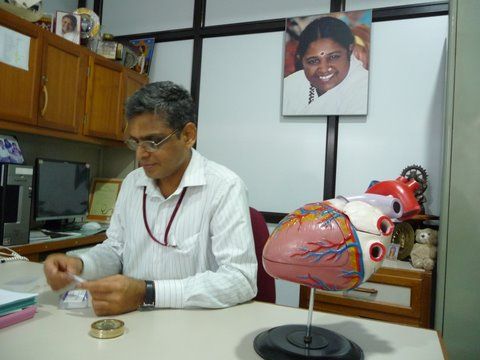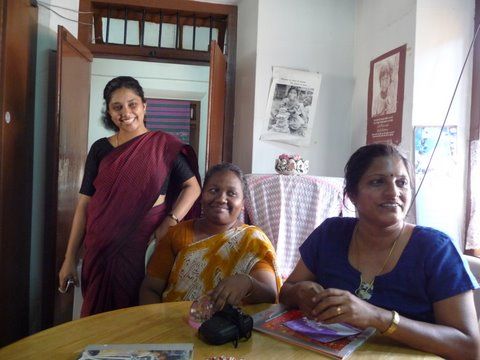Bangalore, December 8 — We traveled in November through the populous tropical state of Kerala to address a puzzle. When India became independent in 1947 hardly anyone could have predicted that Kerala within three decades would be the first state to achieve near-universal literacy, developed-world life expectancy and high quality health care. As surprising, this came about through elected and alternating governing coalitions, led either by Communists or the centrist Congress Party.
Yet everywhere we heard a cross-section of Keralites credibly complain that the vaunted "Kerala Model" has crumbled, and that both dominant parties were to blame. We repeatedly asked whether it made any difference to our interviewees whether leftists or centrists were in power. The consensual response was no, because rival politicians were alike in their eagerness to promote popular short-term palliatives, too loathe to risk electoral disfavor, and resisted holding colleagues and/or comrades accountable for incompetence, sloth and pervasive corruption.
Some blamed too much schooling at the expense of job creation for their state's stagnant economy. Many questioned Kerala's over-reliance on remittances from more than a million migrant workers in the Persian Gulf. In Sunday's Indian Express, the Keralite writer and social critic Paul Zacharia loosed a sulfuric broadside: "The last 60-plus years of democracy in Kerala are notorious for the ruthless rampaging of Kerala's resources and potentials by the Congress-led and the CPM [Communist Party Marxist] –led fronts. They systematically milked the state dry to fill party coffers and build individual fortunes."
Yet this bleak assessment seems to us to overlook the greatest asset that Kerala possesses: its people. We were impressed and at moments inspired by the dedication, intelligence, and feistiness of Keralites we encountered. They comprise the real opposition to the self-perpetuating freemasonry of power-holders that everywhere protects its own. Meet four of Kerala's models.
Dr. R. Krishna Kumar, chief pediatric cardiologist at the Amrita Institute of Medical Sciences, proved as compelling as the healthcare center he serves. Since its inception near Kochi a decade ago, Amrita has grown from a small hospital to a healthcare center with 50 departments, a staff of 2,500 plus 500 volunteers, 22 operating tables and 400 hospital beds. It is a not-for-profit organization "committed to providing outstanding and affordable medical care in a patient-friendly environment" regardless of "race, caste, religion, or economic condition." Its mission was set forth by its still-active founder, the spiritual leader Sri Mata Amritananadamayi, known affectionately to all as Amma. A fisherman's daughter, she is renowned for her charity work in many fields, including health and education.
Amma's portrait hangs over the desk from which Dr. Kumar daily supervises the care of scores of ailing youngsters. Most tellingly, he trained at Boston's Children's Hospital in the 1990's, but came to Amrita rather than pursue a high-income career in the United States. "We have the best health care in India," he says of Kerala, "but it is not good enough." He fears Kerala is veering towards the American path by giving first priority to more lucrative and fashionable tertiary care at the expense of less profitable preventive primary care. Undernourished children, for example, crowd his pediatric ward. "The gains we achieved in the 1970's have been lost," he told us, "and today our best care goes to the tiniest proportion of the smallest minority."
Printer's ink is the lifeblood of Keralite politics. No other state matches its passion for newsprint. This is evident in the proliferation of newspapers in Malayalam, Kerala's vernacular language. Successive polls indicate that after English and Hindi, Malayalam ranks third as the medium for India's dailies. In Trivandrum, we sought out S. Radhakrishnan, coordinating editor of The Mangalam Daily, a politically independent newcomer known for its investigative reporting. He guides eight local reporters and ten subeditors who turn out four different editions, and helps determine news and editorial policies, having recently left a bigger established newspaper to join the new daily whose circulation, unlike that of U.S. local papers, is growing.
India's newspapers all face leaner times. Hence the concern over the revelation that some hard-pressed vernacular dailies are marketing "political advertising," in effect hawking favorable news coverage for a price to politicians and parties, an ominous practice still in its formative stage. Editor Radhakrishnan says he believes this has not occurred in Kerala, but he is pressing for details. Another investigation concerns the lavish lobbying of medical professionals, including payments for endorsing pharmaceuticals. As past practitioners in the same imperiled calling, we salute Mangalam's young staff and its enterprising editor.
By common consent, empowerment of women has been catalytic in Kerala's social achievements. Not only are women literate, but their existence is prized in contrast with other states where female embryos are often aborted. There are no "missing girls" in Kerala. Instead they outnumber men. Thanks to mobilized sisterhood, Kerala's ministers (still nearly all male) enacted legislation stipulating that women had to comprise a third of locally elected village and town councils, a proportion that next year will be increased to fifty percent. Spousal abuse is a concern, so is the resumption of bridal dowries which had all but vanished in Kerala.
In Trivandrum, the capital city, we were impressed by Sakhi, the Women's Resource Center, whose name means women's friend, which keeps a census of elected women leaders, counsels troubled adolescents, and supports legal action against all forms of gender violence. We also found an impressive role model in Professor G.S. Jayasree of Kerala University, editor and publisher of a journal of women's studies, Samyukta, who both affirms that progress is real while deploring retrograde pressure on Muslim girls to adopt conservative dress codes, including head to toe covering rarely seen in decades past. Sisterhood in Kerala is tangible, resourceful, and ubiquitous.
We encountered a bright ornament of Kerala's past in a meeting at Pattom Palace with Sri Marthanda Varma, the 88-year-old head of Travancore's royal family. From 1663 until 1948, his ancestors ruled much of what is now Kerala, and retained their traditional royal titles until 1971, when a constitutional amendment formally terminated the status of all royal families in India's princely states. But the former monarch retains his regal graciousness, and in elegant English expresses no regrets for his fallen majesty.
Like many of his predecessors, including his father and his long-reigning elder brother, the king is at once a devout Hindu, who goes daily to his family's Sri Padmanabhaswamy temple, and a secular-minded progressive on issues of tolerance, education and getting along with elected state ministers, including Communists. We discussed his family's matrilineal tradition, which he defined in a sentence: "I became the maharajah because I was my mother's son, rather than my father's son." He is planning an exhibit of his photographs and readily recalls his engaging encounters with Eleanor Roosevelt and Jackie Kennedy. The best measure of the esteem in which he is held is that even as a "pensioner" (his phrase for himself), he is invited to take part in 300 events each year. He, too, is a role model, not just for Keralites but for royals elsewhere.
We were ably assisted in our reportorial efforts in Kerala by Suresh Kumar, who arranged our visits and served as our occasional translator, our patient guide Ajith Gopalakrishnan, and our capable driver, Prem Nidi.













